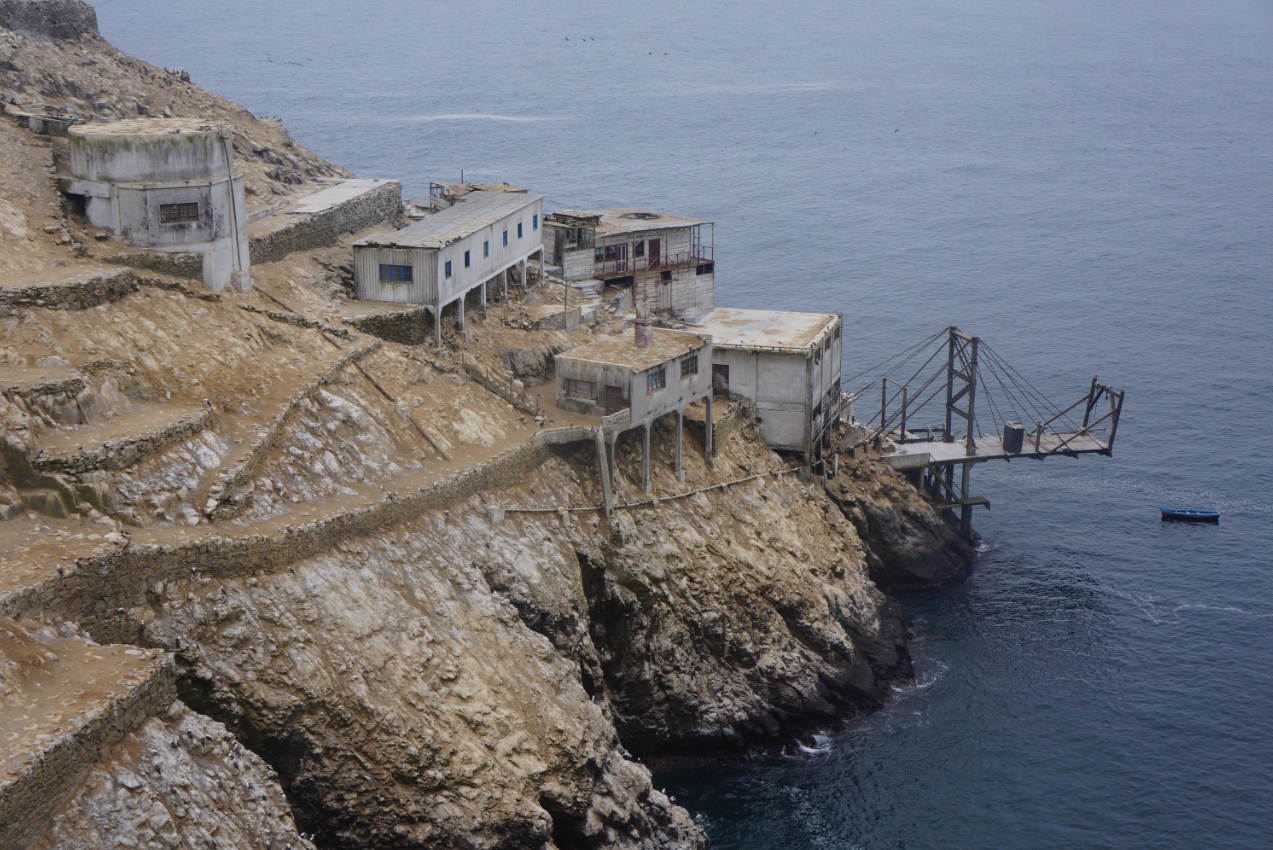


Pescadora Island. Production shot of The Colony, Dinh Q. Lê,2016. Commissioned by Artangel, Ikon, Birmingham, Han Nefkens H+F Collectionand Proyecto Amil, Lima.Photo courtesy Dinh Q. Lê
This Friday I recommend that you immerse yourself in a spectacular new video work by artist Dinh Q. Lê (1968, Vietnam), titled The Colony (2016). The video-installation, commissioned by Artangel, is installed in Peckham Rye’s abandoned Electric Theatre, which was one of London’s earliest cinemas when it opened in 1908.
Dinh Q. Lê, interested in post-colonial politics, filmed The Colony in the desolate environment of the Chincha Islands off the West-Coast of Peru. Home to huge populations of seabirds, the otherwise uninhabited islands were once amongst the most contested places in the world. When ‘guano’, the accumulated excrements of Peruvian Booby birds, became known as one of the most powerful fertilisers to European farmers and US plantation owners in the 19th century, the ‘Great Guano-Rush’ began.
Spain, Peru and the United States battled over the Islands and in 1856 the US Congress passed the ‘Guano Islands Act’, authorising the US to claim unpopulated guano islands anywhere in the world as national property. But it was the British merchants who controlled the guano trade, forcing thousands of Chinese bonded workers to live on the islands and to harvest the bird dung under brutal working conditions.
The run for guano came to an abrupt halt at the beginning of the 20th Century, when chemical fertilisers were introduced. For more than a century the Chincha Islands have been uninhabited and the birds have re-colonised the islands. In the 1980s a new market for guano emerged when the bird dung became popular as a fertiliser in organic agriculture. However, nowadays Peruvian workers are only allowed to harvest guano sporadically to protect the natural life of the birds.
Dinh Q Lê captured one of the contemporary guano harvests on film with drones and land-based cameras, reflecting from different perspectives on the dark history that is inscribed in this seemingly natural paradise. The films are presented on three immense screens, and are contextualised by a series of 19th century pictures of the Chincha Islands in vitrines on the cinema’s balcony and a projected historical map.
One of the screens draws us into the spectacular aerial and panoramic views of the islands’ breath-taking landscapes: the apparently untouched wild-life of the Pacific birds, the sheen of the yellow guano mountains in the sun, the grey coastal rocks and the clear blue water of the sea let the islands appear as one of the most beautiful and intact places in the world.
Another screen allows us to witness Peruvian workers shovelling guano by hand into thousands of black plastic sacks. This takes place without the support of modern machinery or clothing that protects the men against the sun and the ammoniac stench of the dung. The heavy sacks are heaved on huge piles before they are sent through a makeshift chute down to the sea, finally to be loaded onto small boats. One can’t help feeling overwhelmed by the sheer amount of human labour that is required to harvest the guano.
On a third screen the ghosts of 19th century Chinese workers appear as shadowy animations in the derelict prison-like dormitories that were built for them. They remind us of the shocking reality that the inhuman working methods employed during the 19th century that are still in place today.
The artist has interspersed the three films with online footage of contemporary surveillance operations in the South China Sea where China and Vietnam currently fight over contested islands, rich in oil and gas. This brings us back to today’s world, its transnational conflicts over territorial rights and the ongoing exploitation of natural resources and human workforce.
Overall, the video-installation evokes a sense of loss and abandonment, a sense that the accompanying mournful soundtrack by Daniel Kramer beautifully underlines. The derelict and empty Edwardian cinema with its bare dusty walls and worn wooden floorboards further reinforces the feeling of desertion. Contrasting the sublime natural landscape with the seemingly everlasting human world of greed and desire makesThe Colony a powerfully unsettling and captivating short story about colonialism and its legacy.
Lê is originally from Vietnam, which he and his family left during the Vietnam War. He was brought up in Los Angeles and now lives and works between the US and Ho Chi Minh City. The Colony is a major new development of his work, as it is his first piece that does not solely reference the Vietnam War and its aftermath.
Christine Takengny
Curator, Museum Acquisitions
133 Rye Lane, London SE15 4ST. Open Wednesday – Sunday, 11.00-19.00. Exhibition continues until 9 October 2016. www.artangel.org.uk